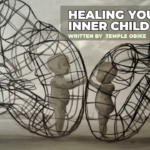Your Anger, Simple Steps to Understand and Transform it is our conversation for today. Do you ever feel like anger just sneaks up on you, taking over your thoughts and actions before you even realize what’s happening? You’re not alone.
As a psychotherapist, going through people’s minds and working through emotions they keep hidden from you is a daily routine. A routine that uncovers an array of well hidden emotions. Of all the emotions encountered , anger is one of the most interesting. Anger is a powerful, normal human emotion that everyone experiences from time to time. I call it a secondary emotion because it usually is caused by a singular or cluster of primary emotions. Anger like i had mentioned earlier is normal but when it becomes too intense, too frequent, or leads to aggressive behaviors, it can cause significant problems in our lives and relationships.
The good news? While we can’t always control feeling angry, we absolutely can learn to manage how we express it and develop self-control over our actions. It’s about learning new ways to act when you’re upset.
Let’s break down some key concepts from anger management principles that can empower you to take charge of your anger.
1. Unmasking Your Anger: Triggers and Cues
Anger doesn’t just appear out of nowhere. It’s often a response to specific situations or events – what we call triggers. These triggers can be external (like being stuck in traffic or dealing with an inconsiderate person) or internal (like certain thoughts or beliefs). Becoming aware of your personal triggers is a crucial first step in managing anger, allowing you to anticipate potentially difficult situations.
Alongside triggers, our bodies and minds give us warning signs, or cues, that anger is starting to build. These cues fall into different categories:
•Physical Cues: What you feel in your body, like a rapid heartbeat, muscle tension, or feeling hot.
•Behavioral Cues: What you start to do, such as clenching your fists or raising your voice.
•Emotional Cues: Other feelings that accompany anger, like frustration, hurt, or embarrassment.
•Cognitive Cues: The thoughts running through your mind, often hostile or focused on revenge.
Learning to spot your unique cues early on – when your anger is still “small” – gives you a chance to intervene before it escalates.
Action Step: Reflect on a recent time you felt angry. Can you identify the trigger and the warning signs you experienced?
2. Tracking the Journey: The Power of the Anger Log
One of the most effective tools for building self-awareness is keeping an Anger Log or Diary. This involves taking a few moments after an anger episode (or even at the end of the day) to record the details.
Logging your experiences helps you:
•Identify patterns in your triggers and cues.
•See how your response impacts the outcome.
•Organize your thoughts and process the event.
A typical anger log includes noting the date, time, the trigger event, your warning signs, how you rated your anger intensity (perhaps on a simple 1-10 scale), what you did in response, and how you felt afterward. Over time, reviewing these entries can provide invaluable insights into your anger “habit”.
Action Step: Start keeping a simple log of your anger episodes, noting what happened, how you felt, what you did, and what resulted.
3. Recognizing the Cycle: Buildup, Explosion, Aftermath
Anger episodes often follow a predictable sequence, known as the Aggression Cycle. It typically involves three phases:
•Buildup: This is where the triggers and cues come into play, and your anger starts to escalate.
•Explosion: If the buildup continues unchecked, it can lead to an outburst, aggression (verbal or physical), and a loss of control. It’s important to remember that aggression is a behavior aimed at causing harm, distinct from the emotion of anger itself.
•Aftermath: This phase is characterized by the negative consequences that follow the aggressive outburst. This could include feelings of guilt, shame, and regret, damage to relationships, or other significant problems. The pain of the aftermath can sometimes lead back into conditions ripe for another buildup, perpetuating the cycle.
The core goal of anger management is to prevent reaching the “Explosion” phase. By recognizing the signs during the “Buildup,” you can choose different actions.
Action Step: Think about a past time you lost control due to anger. Can you see the buildup phase leading to the explosion and then the negative aftermath?
Breaking the Habit, Building New Skills
Anger can become a maladaptive habit, leading to negative consequences. But like any habit, it can be changed. By understanding your triggers, recognizing your cues, and analyzing your patterns through tools like the anger log, you gain awareness.
This awareness allows you to implement strategies to manage your anger effectively. These can include immediate techniques like taking a timeout to cool down, practicing relaxation methods like deep breathing, challenging hostile thoughts, and learning assertive communication skills to express your needs and feelings respectfully without resorting to aggression. Seeking support from trusted friends, family, or support groups can also be incredibly valuable.
Transforming your relationship with anger takes practice and effort. It’s a journey of learning and applying new skills. But the rewards – greater peace of mind, healthier relationships, and increased self-control – are immeasurable.
Start today by increasing your awareness. Your future self, and your loved ones, will thank you.


